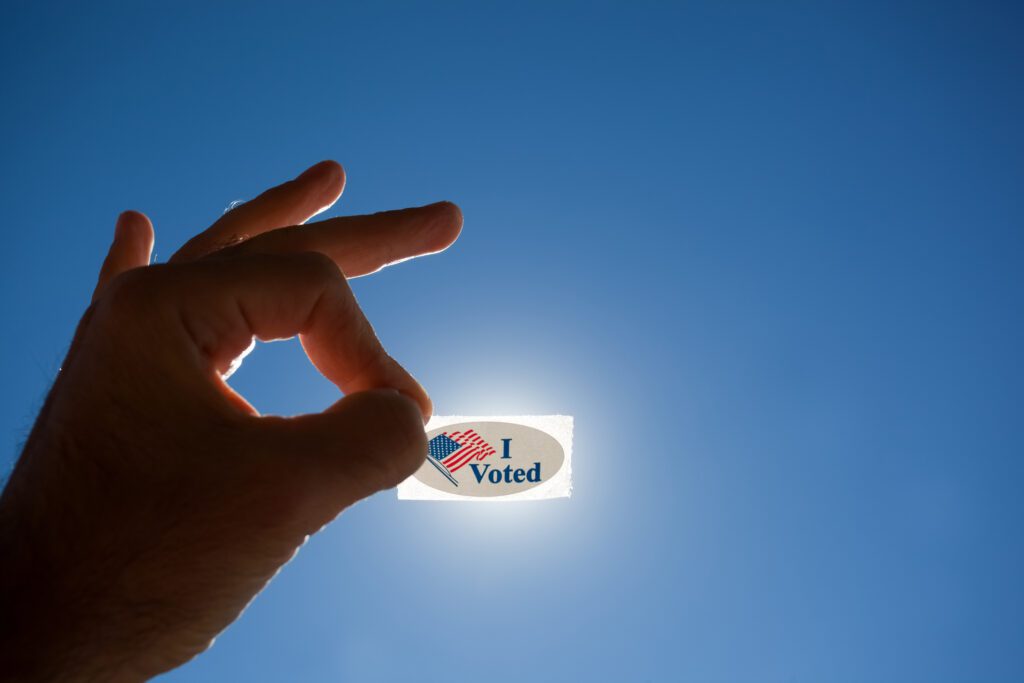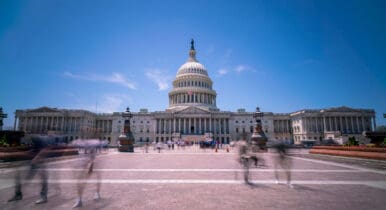Meet the American Super Distrusters


Image Credit: amygdala_imagery
One in four Americans (26%) are institutional Super Distrusters, reporting that they have no faith in at least three of the following – the media, the federal government, the things they read online, their elected officials, and CEOs of large corporations.
Most reporting on falling societal trust levels has focused on declining societal trust in institutions, especially the media and government. What they’ve not focused on, until recently, are the growing number of people who have lost faith in most or all institutions.
Declining trust in institutions is a well-known problem. Pew, Gallup and many other opinion research institutes have tracked this issue for years. What has not been well-studied is the percentage of the population that has lost faith in the federal government, the media, and political and business leadership. Call it the rise of the Super Distruster.
With the 2024 cycle now behind us, it’s tempting to categorize declining trust levels as a political problem and a challenge for candidates and their campaigns. It certainly is. How will political leaders connect with actively distrusting voters? Long-form influencer podcasts, as we just saw in the last election, may be one strategy.
But Super Distrusters are more than voters. From a business perspective, they’re consumers, employees, and shareholders. How will businesses rebuild confidence among those least inclined to believe them?
Super Distrusters were first discovered by the MHP Group’s Polarisation Tracker, with analytical support from Cambridge University’s Political Psychology Lab. Their research found that 29% of UK adults are Super Distrusters “who believe the country is going in the wrong direction, our institutions have been corrupted, and that this is the fault of self-serving, hostile and incompetent elites.” Given the linguistic, cultural, and political similarities between the United Kingdom and the United States, we set out to explore this phenomenon in America.
Our research, conducted April 12-14, 2024 among a census-representative 800 American adults, utilized a simpler methodology, but identified a similar percentage of disillusioned and distrustful citizens in the United States.
We asked Americans to rate their level of trust in a range of institutions and defined American Super Distrusters as those reporting that they “do not trust at all” at least three of five institutions representing media, government and business – the federal government, their elected official, news media, things they read online, and CEOs of large corporations. The numbers aren’t encouraging.
For example, 31% “did not trust at all” the federal government, 29% did not trust CEOs, 28% did not trust the media, 26% did not trust their elected officials, and 24% said they did not trust the things they read online. Combining “do not trust at all” and “trust a little” yields between 60% and 70% of Americans with little or no trust in key institutions.
While these findings are alarming, they shouldn’t be surprising. Opinion research has been tracking declining institutional trust for several generations. For example, Gallup has tracked “trust and confidence” in American mass media since 1972, and the percent reporting that they have a “great deal” or “fair amount” of trust in the mass media has dropped from just over 70% in the late 1970s to only 31% today.
Gallup polling has tracked a similar free-fall in confidence in newspapers. Confidence peaked in the late 1970s at 55% “great deal” or “quite a lot” of confidence among Democrats, 49% among independents, and 46% among Republicans. By 2022 confidence in newspapers had dropped to 35% among Democrats, 12% among independents, and only 5% among Republicans. We’ve seen the same declines in trust for most other American institutions, notably the federal government. A Pew Research Center survey from Spring 2024 found that only 22% of US adults trusted the federal government to do the right thing “just about always” or “most of the time.”
Who are the American Super Distrusters? Interestingly, Super Distrusters look like America and mirror America’s demographic diversity. Super Distrusters have the same gender, age, ethnicity and regional distribution as the national population. The only difference is that Super Distrusters are marginally more conservative.
For example, while 31% of our survey population identified as conservative, 43% of Super Distrusters are conservatives. And while 28% of the sample identified as liberal, only 12% of Super Distrusters are liberals. The pattern by partisanship is similar, but more muted. While 32% of our sample self-identified as Republican, slightly more Super Distrusters (38%) reported they were Republicans.
Similarly, while 34% of our sample self-reported as Democratic, Democrats are only 15% of Super Distrusters. The numbers among political independents give us some additional clues. Independents were 29% of our sample, but 39% of Super Distrusters. This means that American Super Distrusters are marginally more likely to be politically conservative independents, suggesting that this group is also somewhat more distrustful of political parties. This makes sense. Right-of-center Americans distrustful of government, business and the media, may also be somewhat distrustful of the GOP as an institution.
We have a problem. But what do we do about it? We have reams of data on declining trust levels, but very little in terms of proposed solutions. The fact that we have a mountain of data on the problem, but a vacuum of solutions is the deeper insight.
America’s institutions, its political and business leaders, aren’t going to communicate their way out of the trust deficit they operated their way into. We’re in a very deep valley of distrust. Author Cory Doctorow coined the term “enshitification” in 2022 to describe the decline of online platforms. It touched a cultural nerve and became the American Dialect Society’s word of the year for 2023. What started as a critique of online platforms quickly became a critique of everything – the decline, the “enshitification” of everything. “Enshitification” creates daily micro-frustration and is a trust killer.
But it’s not just the “enshitification” of everyday life, or inflation, or a distant elite, it’s also the distance between daily micro-frustrations and saccharine, tone deaf, messages to the contrary.
Elites can choose to wave away Super Distrusters – 26% in the United States and 29% in the UK. They can discount them as the disaffected losers in a 21st century economy. They can blame their views on conspiracy theories or disinformation. They can choose to tell them, like the famous meme, that “this is fine.” They can even tell them to go and see the pandas. But none of these will address the underlying reality of the quarter of Americans that have lost faith in the system.
Robert Moran is a management consultant, public opinion expert, and Partner at the Brunswick Group


